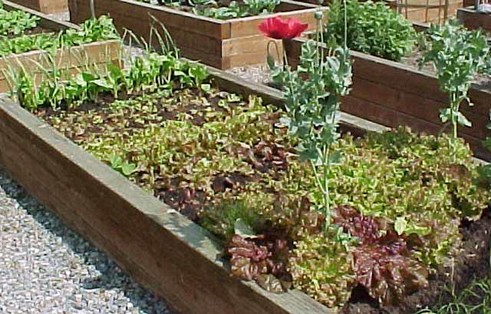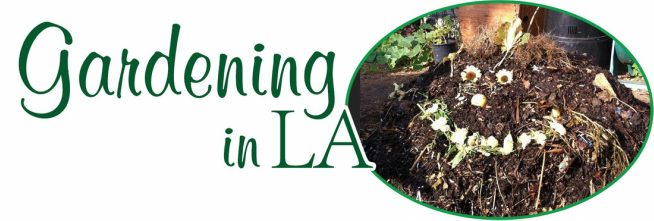
I did forget to take the latest batch of kitchen clippings up to the compost pile. Now I’ll have to wait until the weekend after the storms, since I don’t want to compact the soil even in the pathways by walking there for 2 days following the kind of drenching we just had. Walking on wet soil literally squishes out the air pores, and the air can’t be reintroduced short of digging and turning the area – and who wants to mess with that in pathways? But it’s critical to enable all the garden’s soil to breathe!
If you didn’t already spread mulch before the rains, do so whenever you can before warm spring weather that will start to dry out the soil. You want to insulate the moist soil. If you wait too long into the spring warmth to spread the mulch, you’ll be insulating dry soil and will have to water all the more to remoisten the soil surface so the mulch can be of help.
If you did spread mulch before these rains, check how deeply the rain went down underneath it into garden soil. If it didn’t go down more than a couple of inches, pull it aside so the upcoming storms will be able to sink directly into the soil. Then, when the soil is moistened at least a foot down, or before spring warmth, spread the mulch out again so it’ll insulate the moisture.
With nighttime temperatures above 50°F, go ahead and seed and plant everything that’ll mature through early summer, including tomatoes – but not any other summer-heat-lovers like cucumbers, melons, peppers, squash since they’ll just sit and pout and never really catch up to ones you sow or transplant when daytime temperatures are consistently above 70°F. I even pulled out the 4” bean plants that had germinated during the warm spell several weeks ago. No reason to “waste” garden space having plants struggle! Best to grow in season what thrives in those conditions!
Just finished the first harvest of 10 different lettuces in all shades of green and maroons and speckles and crinkliness – I love the Bibb type butterheads and even some cos romaines because I harvest the outer leaves only and love their crunchiness. I separate the leaves that are more than four inches long for sandwiches, and keep the tinier ones for nightly salads. Spinaches and kales and chards – and even some peppers – add texture and color, and peppers add sweetness. I prefer the pimento-type with their thick walls and letting them mature into deep red coloration.
Later this spring, when the spinaches and kales and chards get too plentiful to give away at garden meetings, I saute them with garlic and leek and parsley and cilantro until they’re fully wilted. Then I freeze the mix in 2-cup portions for later addition to quiches, soups, stews, and anything else that occurs to me. It’s a great way to dispense with a huge harvest and have instantly ready later!
Guess what we’re having for dinner!

 RSS Feed
RSS Feed